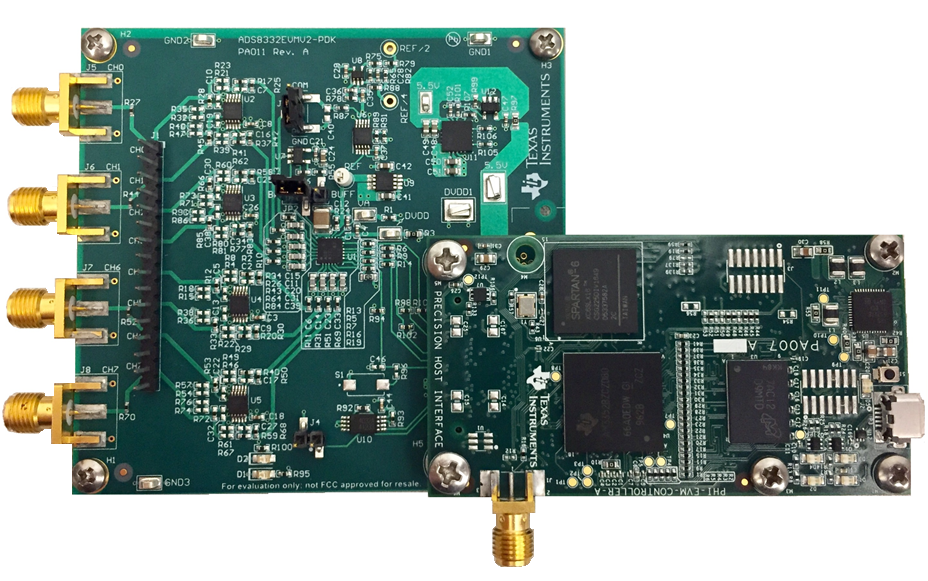SBAU251B July 2017 – February 2023
1 ADS8332EVMV2-PDK User's Guide

This user's guide describes the characteristics, operation, and use of the ADS8332 evaluation module (EVM) performance demonstration kit (PDK). The ADS8332 is a low-power, 16-bit, 500k samples per-second (SPS) successive approximation (SAR) analog-to-digital converter (ADC) with an 8-to-1 multiplexer (mux) input. Each input channel on the device supports unipolar input ranges of 0 V to 4.096 V with single-supply operation. The EVM-PDK eases the evaluation of ADS8332 device with hardware, software, and computer connectivity through the universal serial bus (USB) interface. This user's guide includes complete circuit descriptions, schematic diagrams, and a bill of materials.